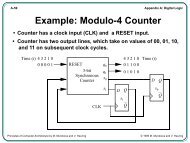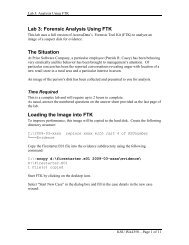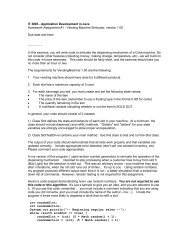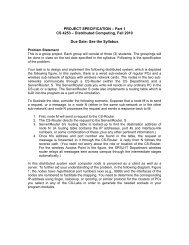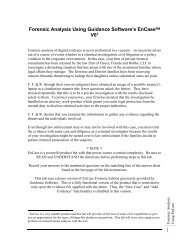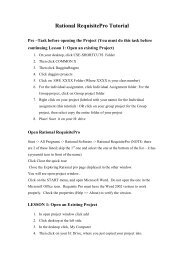Create successful ePaper yourself
Turn your PDF publications into a flip-book with our unique Google optimized e-Paper software.
DRAFT, February 18, 2003, Page 65<br />
the line with the breakpoint set is eventually highlighted, indicating that the program is stopped at the<br />
breakpoint, and finally, on the left side of the jGRASP desktop the debugger pane is popped to the top.<br />
Each of these can be seen in Figure 50. Notice the debugger pane is further divided into three subpanes<br />
labeled Threads, Call Stack, and Variables/Settings. Each of the debugger subpanes can be resized<br />
by selecting and dragging one of the horizontal or vertical borders. This has been done in some the<br />
figures that follow. The Threads subpane lists all of the active threads running in the program. In the<br />
example, the red thread icon indicates the program is stopped in main, and green indicates a thread is<br />
running. Beginners and intermediate users can ignore the thread pane. However, advanced users<br />
should find it quite useful for starting and stopping individual threads in their programs. The Call Stack<br />
subpane is useful to all levels of users since is shows the current call stack and allows the user to switch<br />
from one level to another in the call stack. When this occurs, the CSD Window that contains the source<br />
code associated with a particular call is popped to the top of the desktop. The Variables/Settings<br />
subpane shows the details of the current state of the program. Finally, when a line of source code is<br />
highlighted, it means that the line is about to be executed.<br />
Figure 50. Desktop after debugger is started










